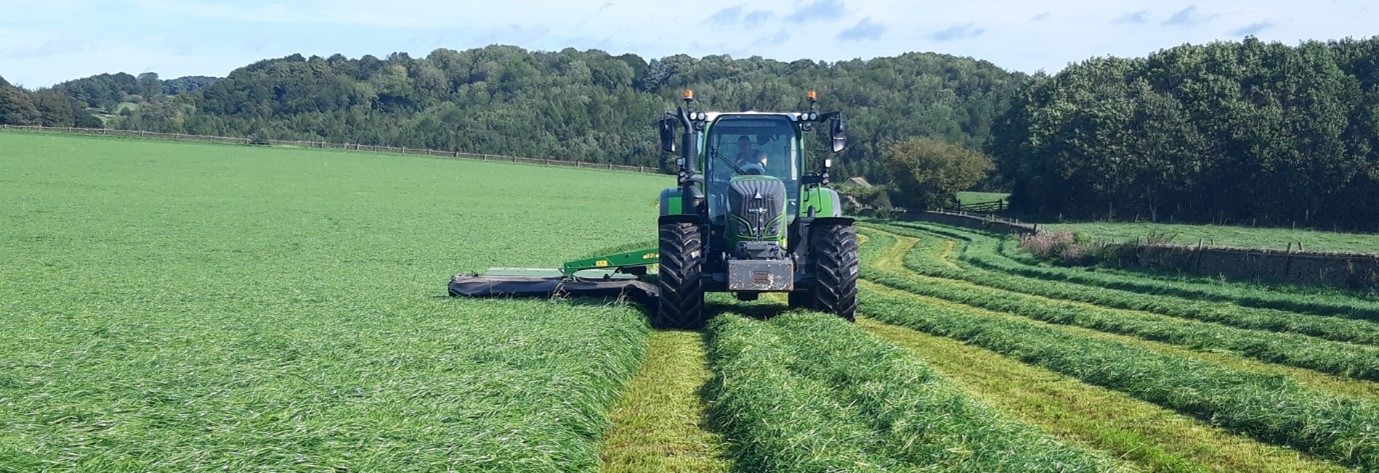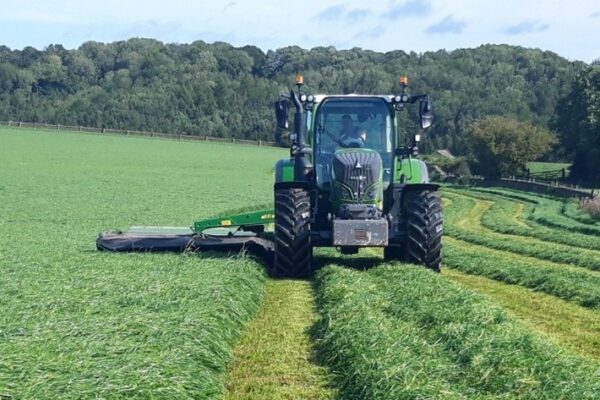Agribusiness News October 2024 – Inputs: Forage & Feed Budgeting
30 September 2024Importance of planning
Carrying out a forage budget might sound like a big task but there are some great tools available, and planning now can save you from a much bigger headache in a few months’ time.
Once all forage has been harvested and silage has been in the pit for a minimum of 6 weeks; this is an ideal time to take stock of what you have in store to carry livestock through the winter and of equal importance, to assess the quality of forage. However, It is always useful to revisit the budget during the winter, just to check you are still on track.
Benefits of Forage and Feed Budgeting
Forage and feed budgeting allows you to assess the feed and forage available against the livestock demand. As we head into the winter months this is particularly useful to allow you to identify any shortfalls early – allowing for early intervention and forward planning. It allows for more control of the ration and avoids any sudden dietary changes which can be detrimental to production. It also helps to avoid potentially expensive feed purchases later in the season by allowing for forward bulk buying therefore, reducing cost volatility. By assessing forage quality, you can make the best use of resources available and ensures that each ration is balanced to meet requirements.
The process:
- Get your forage analysed
- Measure and calculate forage availability
- Measure any other feeds available
- Calculate demand from all livestock categories
- Determine supply vs demand
- Consider options to increase feed available or reduce demand
- Take Action!
Steps to create a forage budget
Step 1: Calculate the volume of forage available
— For a pit = length x width x height = total volume m3. Don’t forget to add a ramp if applicable ((length x width x height)/2)).
– For bales, weigh a few bales to get an average weight (kg) and x number of bales = Total FW (kg)
Step 2: Convert volume into fresh weight available
Volume x density (this will vary with clamp height and dry matter)/1000 = fresh weight (kg)
Step 3: Calculate dry matter available
Fresh weight x dry matter %/100
Step 4: Calculate demand
Number of stock x dry matter intake x days feeding
Step 5: Calculate shortfall or surplus
Dry matter available vs. Dry matter demand
Forage wastage should also be included in your calculation at Step 3 when estimating the dry matter available. At housing, wastage is predicted to be around 10% and while grazing with ring feeders, wastage is predicted to be between 20-30%.
The size of the animal, body condition, production level i.e. stage of pregnancy, lactation, growth rate etc. will all impact actual demand. Having rations formulated for each category of livestock will allow you to better match forage availability and quality, in line with your forage budget and this should be revisited as the winter progresses.
Options to consider if forage or feed is short
If you calculate a shortfall in supply, there are a few options to consider. If forage is in short supply consider options to extend the grazing season or sourcing additional forage; harvesting additional forage could also be an option but consider the pressure on grazing availability. Or is there an alternative feed or forage replacer you could use to help meet the deficit? Forward buying can be beneficial depending on market conditions and help avoid unexpected costs later in the season.
In order to prioritise the breeding and replacement stock, consider selling cows not in calf or replacement/breeding stock not meeting performance targets.
If you have youngstock, could you reduce the pressure on feed and/or forage stocks by selling them store before housing? Or could you increase the use of concentrates to finish them faster? This is something you could discuss with a nutritionist or feed adviser to weigh up the cost-benefit of each option.
For further information, the FAS companion app is available to download from the Google play store and Apple Store and has a forage calculator as well as other helpful technical advice. Or you can find a forage and feed budgeting guide here:
FAS: https://www.fas.scot/downloads/a-step-by-step-guide-to-forage-and-feed-budgeting/
AHDB: https://ahdb.org.uk/feed-and-forage-calculator
Mary Young, mary.young@sac.co.uk
Sign up to the FAS newsletter
Receive updates on news, events and publications from Scotland’s Farm Advisory Service





